In 2004, then-President Bush was anticipated to announce a brand new house initiative. There could be a manned mission to Mars and our first moon base could be up and operating by 2020. It was set to price between $40 billion and $80 billion. Newer estimates counsel the price could be round half a trillion {dollars}. One proposed plan to economize could be to ship older astronauts who would simply by no means come again. They’d set up a base and dwell the remainder of their lives on Mars.
NASA performed over 1000 research on the potential of a Mars mission between 1950 and 2000. At one level, NASA was actively trying into having a manned mission to Mars or, inexplicably Venus, by 1975 or 1977.
Clearly, humanity shouldn’t be shifting rapidly towards Mars, however it would occur at some point. When it does, is it simply going to be a fast journey or one thing extra? It’s virtually a waste of assets to go there simply to plant a flag. The thought of establishing a base and even colonizing the planet has lengthy been a dream. Elon Musk has a plan to get there and populate the planet by the 2040s. He believes a million folks can be dwelling there by then. NASA is much less optimistic and believes a manned mission by the 2040s, not a complete metropolis, is extra reasonable.
However the query is, can we do it in any respect? How will we overcome the various obstacles that make populating Mars far more durable than populating some random new nook of the Earth?
The ambiance on Mars is skinny and inhospitable, about 95% carbon dioxide. The stress is so low that, with out protecting gear to put on, a human’s blood would boil. Mars used to have a magnetic area like Earth, however it light away about 4 billion years in the past. Meaning it’s now not capable of maintain an Earth-like ambiance as a result of photo voltaic winds stripped all of it away with no atmospheric safety. The gravity on the planet is about 38% of Earth and thus it will possibly’t maintain a thick ambiance.
There may be water on Mars however it’s not free-flowing on the floor like it’s on Earth. We’d must land close to a few of the identified assets and work to reap it. Likewise, rising crops on Mars would require particular situations. You may’t simply plant a potato in Martian soil. The planet is colder than Earth with temperatures that barely high 70F on the hottest however plunge to -80F on the coldest. It additionally will get far much less gentle to assist in photosynthesis. Crops would should be grown in greenhouses which require extra assets and care.
Most regarding is that, as a result of Mars has no atmospheric shielding like Earth, it’s consistently being bombarded by cosmic radiation. Anybody on the floor could be hit by it on a regular basis, risking most cancers and different illnesses. That drawback must be solved earlier than any long-term settlement could be established.
So how will we remedy these issues? Fortunate for us, and extra fortunate for the primary folks to go to Mars, we do have a number of options.
Constructing Shelter
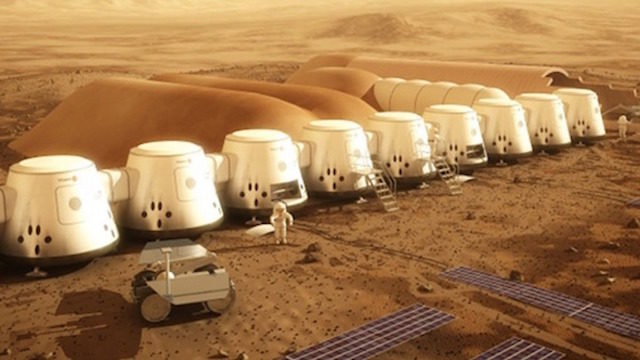
Earlier than something can occur on Mars, it must have a spot to occur. People on Mars want shelter. SpaceX has been engaged on plans for dome shelters for a while now. Future Martians can’t simply use lumber or concrete, and there are solely so many heavy provides that may be introduced from Earth.
One thought for Martian shelters is chitin. You’ll find this materials in fungus in addition to exoskeletons of bugs and issues like fish or lizard scales. Astronauts might deliver bugs for protein and extract the chitin, then combine it with Martian soil to make a building materials. Utilizing solely supplies discovered on Mars or which can be byproducts of issues the astronauts have with them, the result’s a compound very very like concrete however a lot lighter.
Not solely are you able to make constructing supplies out of it, however you’ll be able to style it into absolutely anything, even instruments. It’s sturdy, light-weight, and straightforward to make.
Different plans which have been submitted to NASA make use of 3D printing. Printers could be despatched forward of manned missions and arrange by robots. One firm has already proposed a design for five-story buildings, and their 3D printing on earth has proven they know what they’re doing.
Making the most of Martian geography has additionally been proposed as a technique of doing a variety of the laborious work of shelter constructing. Why construct a complete construction when you should use a cave? A number of caves have already been recognized as potential websites.
In the same vein, the thought of constructing underground has been proposed. Subterranean buildings additionally supply the good thing about safety from the cosmic radiation that bombards the planet.
Producing Oxygen
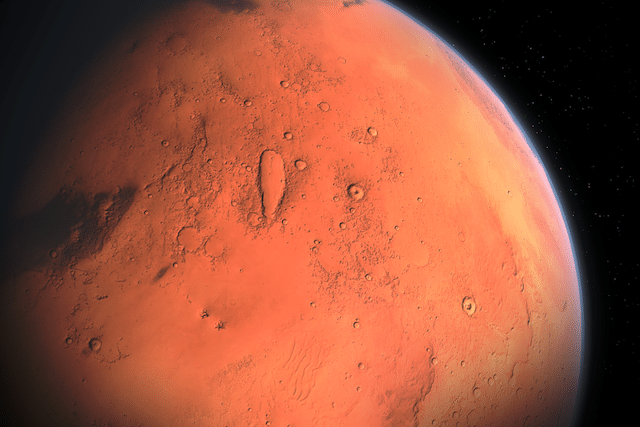
People can solely survive a couple of minutes with out oxygen so that’s an important factor we have to have on Mars. Oxygen tanks on an area shuttle weigh over 1.3 million kilos and that’s simply the air they should survive journey. There could be little room for “further” oxygen on a Mars mission, relatively simply sufficient to get them established earlier than they began making their very own.
NASA created a machine known as MOXIE (Mars Oxygen In-Situ Useful resource Utilization Experiment) that extracts oxygen from the Martian ambiance. They examined it on the Perseverance rover and it proved profitable all through many exams. The machine strips oxygen molecules from the CO2 within the Martian ambiance to make breathable air by means of electrolysis. This oxygen may also be used as gas.
Within the exams, it made sufficient air for a small canine to outlive. In actuality, extra highly effective machines could be deployed to make sure all astronauts have air to breathe throughout their keep.
There are different methods to make breathable air on Mars, nevertheless. If the briny water filled with chemical substances known as perchlorates discovered on Mars probes is a sign of extra considerable water provides, astronauts might land close to these rivers and extract considerable oxygen and hydrogen from the answer additionally utilizing electrolysis. It might make extra oxygen with much less energy, too.
A 3rd technique includes doing a lot the identical as what MOXIE does solely, on this case, low-temperature plasma is used as an alternative of old style electrolysis. The profit to that is that it’s way more power environment friendly.
Assuming that air shouldn’t be going to be a difficulty by the point we get to Mars, what will we do about meals and water?
Harvesting Water and Meals
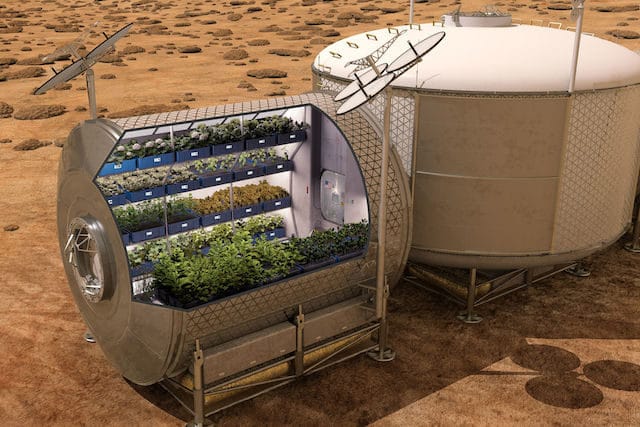
Mars has an abundance of ice on the floor and under the floor. This ice can be utilized to make drinkable water. As it’s, the water could be poisonous so it might should be handled earlier than consumption, however NASA has plans for that. One consists of introducing useful micro organism to eat harmful perchlorates and make the water drinkable.
To make water for a complete colony, concepts like creating a large, microwave water extractor that may function inside a borehole within the ice have been proposed.
As soon as the water scenario has been dealt with, astronauts can transfer on to worrying about methods to develop meals. The Martian soil is pretty poisonous, so issues like hydroponic gardens are going to be the answer. However that doesn’t imply the soil has no use. Cyanobacteria can develop on Martian soil. This can take away harmful perchlorates but in addition present natural materials wanted for farming. Basically, it might make fertilizer wherein astronauts can begin rising meals.
With fertilizer being supplied by micro organism, or even from astronaut waste, farms can exist in Martian buildings. Hydroponic gardens, vertical farms, and something that gives house to develop crops can be utilized. Whereas it looks as if it may be laborious to develop crops on an inhospitable planet, agriculture consultants have likened it to rising crops in a metropolis. It will not be arrange in a manner conducive to that, however you’ll be able to adapt. As a bonus, the crops may also be used as a part of water recycling and oxygen manufacturing.
NASA is engaged on genetically modified crops that would survive Mars’ extra harsh situations within the hopes of boosting meals, oxygen, and even medication manufacturing for future Martians.
Radiation Safety
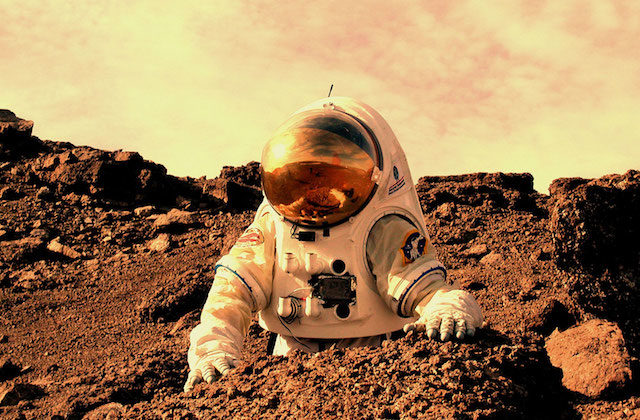
So we are able to get to Mars, we are able to construct a base, fill it with oxygen, and develop some salads whereas we’re at it. What will we do in regards to the harmful radiation hitting the planet continuous? It’s estimated astronauts heading to Mars can be uncovered to radiation ranges 700 instances increased than on Earth. Particle radiation, probably the most harmful sort, comes from distant stars and is made up of protons stripped of their electrons and touring at near-light pace. Most are hydrogen however some are a lot heavier components like iron or uranium.
These particles go via almost the whole lot they hit, together with spacecraft and astronauts. On their manner via your physique, they’ll harm DNA and cells. You may defend in opposition to them with very thick lead, as an example, however that’s not possible to deliver to Mars. Different choices could also be utilizing one thing like hydrogen within the type of water or plastics. An alternative choice is hydrogenated boron nitride nanotubes that are gentle sufficient to be woven into material. Extra work is required to find out feasibility, although.
One potential technique to guard astronauts from these harmful particles is to principally create a pressure area. Regardless that it feels like science fiction, that is one thing we might generate with a magnetic area. Superconducting electromagnets arrange round a Martian base would cease particles from getting into and inflicting harm. The main disadvantage to this concept is the ability required to maintain it operating isn’t sensible.
To date, developing with a sensible solution to overcome the radiation challenge has confirmed to be one of the vital tough challenges for a mission to Mars. There are some options, however it’s not identified how efficient they’d all be over the long run.
Can we Terraform Mars?
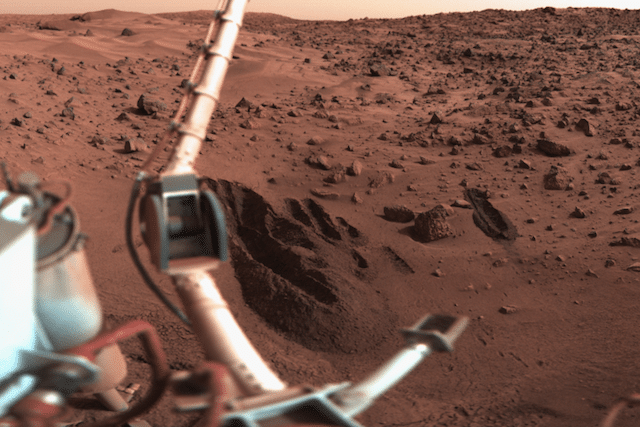
Because of science fiction, the thought of terraforming is one thing many people are conscious of however the logistics in actual life are removed from clear. Nobody has ever completed it earlier than and even tried, so we’re flying blind on a variety of this and there are main hurdles to beat.
If you wish to terraform Mars, it wants an environment. How do you present that if nothing holds it in place? Escape velocity on Mars is three miles per hour, so it’s very laborious to maintain something sure to the planet.
One plan to make it hospitable includes releasing iron and aluminum nanorods into the ambiance to behave as greenhouse brokers. This plan would increase the temperature to almost 80 levels Fahrenheit and soften Mars’ ice caps, releasing greenhouse gasses. This could take years and nonetheless solely make the planet heat, not make air or usable soil, however it’s a step.
To make oxygen on Mars could be a monumental process. On Earth, cyanobacteria developed billions of years in the past when our personal ambiance was principally carbon dioxide. They started performing photosynthesis to provide oxygen and made our world hospitable for all times. That would theoretically occur on Mars however the course of takes 1000’s of years and desires brighter gentle than Mars has. To counter this, some low-light micro organism options have been prompt.
Melting the ice caps on Mars could not present the atmospheric stress wanted to permit liquid water to stay on the floor. Even when we use nuclear weapons to soften them, as some have proposed. It’s believed that there merely is not sufficient CO2 on Mars for this to work.
The dearth of a magnetic area means any ambiance we make will vanish once more. Meaning both kickstarting the magnetic core of the planet once more, which is past any identified expertise or establishing a synthetic magnetic area in house. However that can be past present expertise.
If Mars could possibly be terraformed, the method might very nicely take generations. Those that lived there must adapt to a world with completely different pressures and gravity. Day by day train could be required to take care of muscle and bone mass. Over time, these on Mars would adapt to their world and certain by no means be capable to return to Earth with out critical well being points.
However none of that issues in the mean time as a result of we’ve virtually not one of the expertise wanted to correctly terraform the planet. We will go there and construct, sure, however dwelling on the floor shouldn’t be one thing we’ll see for hundreds of years, if ever.
Different Articles you Would possibly Like

